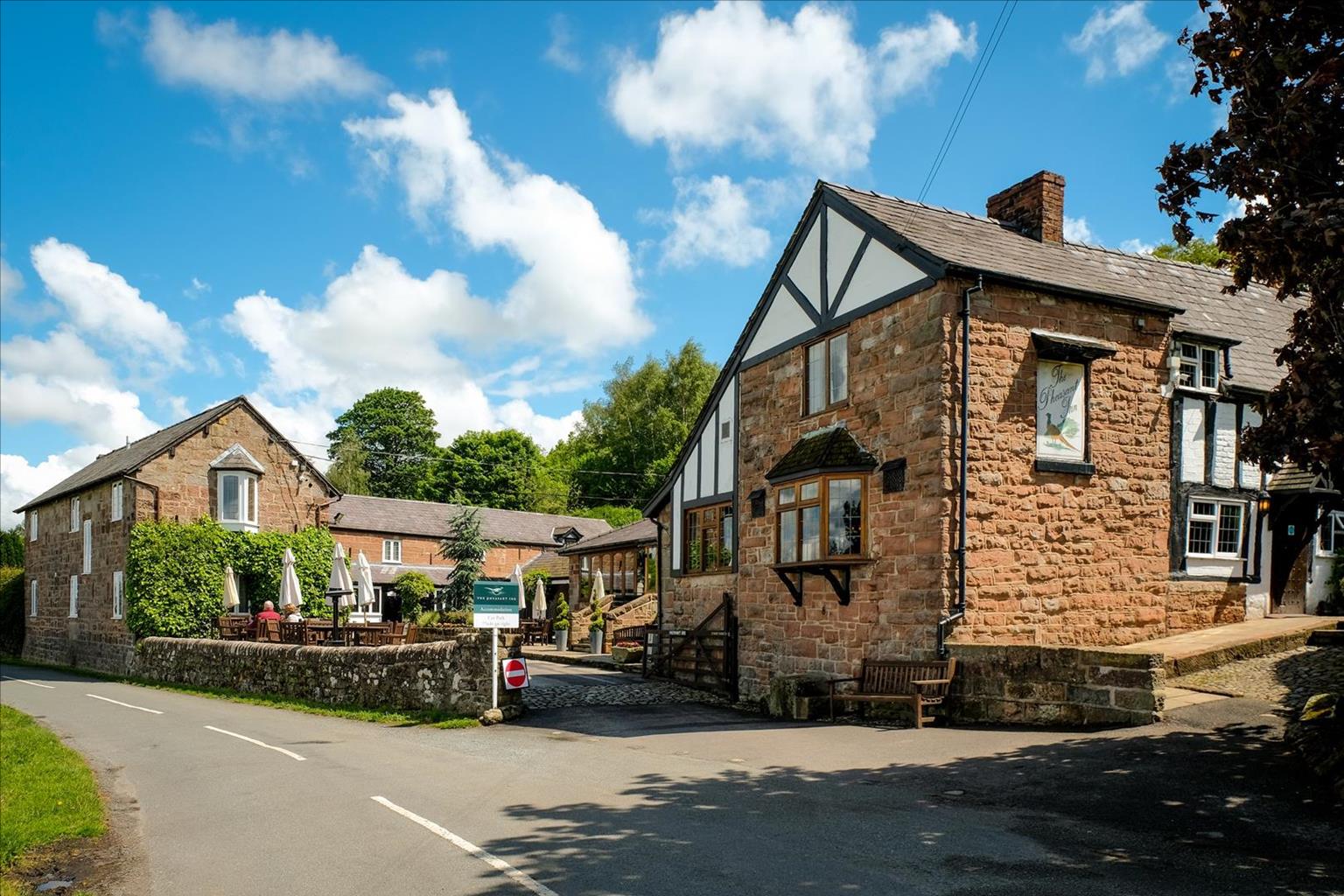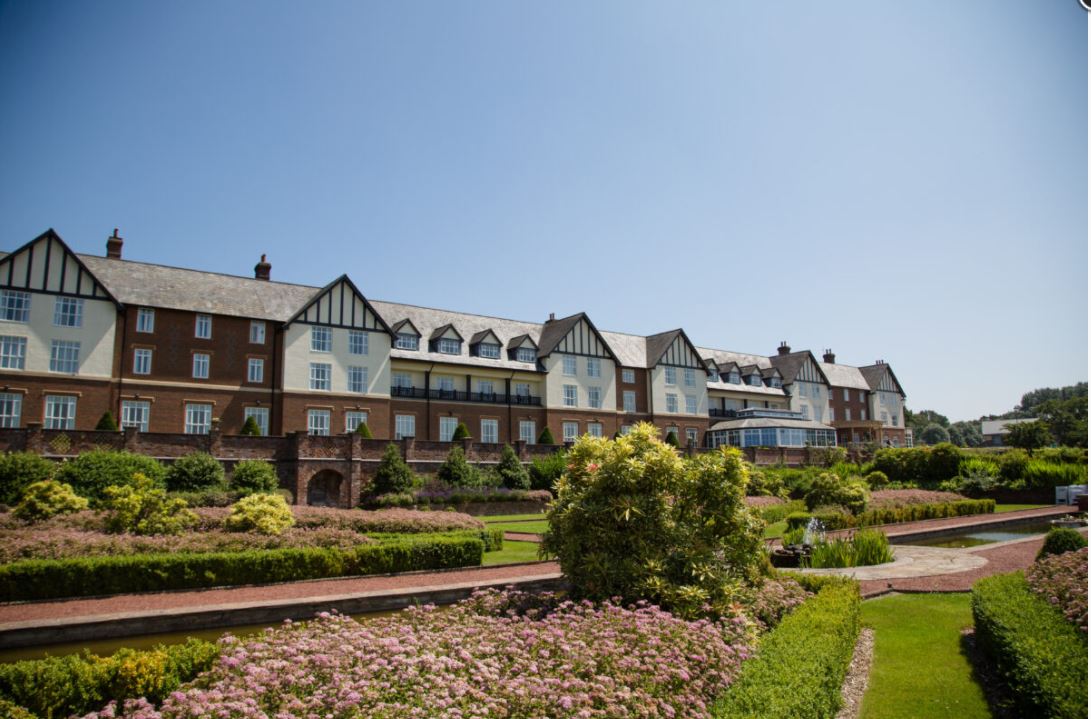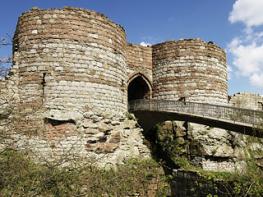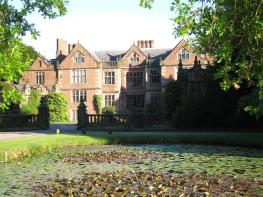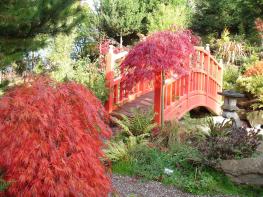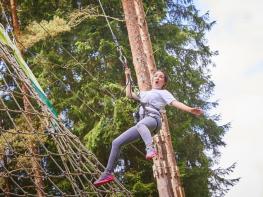The Pheasant is a delightful 300-year-old inn that sits high on the Peckforton Hills and enjoys…
On Peckforton's estate

Classic Cheshire farmland and richly varied woods
3.75 miles (6kms)
About the walk
The Peckforton estate is centred on a splendid Victorian country house, built in the style of a medieval castle by John Tollemache. Then Cheshire's largest landowner, he served as High Sheriff and MP for the county and was an exemplary estate manager, investing in his tenants with the construction of many cottages. Some of these picturesque dwellings are seen on the walk, but the castle, now run as a function and leisure complex, hides amongst the hilltop trees at the northern end of the Peckforton Hills.
A Norman castle
There is, however, another castle, spied in the distance during the first part of the walk. Once known as the 'Castle of the Rock', Beeston commands a fine strategic outlook from the summit of an isolated hill just to the north. It is a 'proper' castle, built during the early 13th century by the powerful Earl of Chester to consolidate his position and oversee the Welsh border.
An old pub
The attractive architecture of The Pheasant Inn, passed at the beginning of the walk, is characteristic of many of Cheshire's old buildings. Black and white timber frame structures rest on a base fashioned from the red sandstone that underlies the wooded ridges overlooking the Cheshire Plain. The inn started life as a farmhouse, but by the middle of the 17th century doubled as one of the village's three alehouses. It was a focus of village life, particularly at the anniversary of the church's dedication, when a fair, dance and other entertainments attracted revellers from the outlying farms and beyond.
A long history
Building stone was quarried from Peckforton's hills by the Romans, but they were not the first to exploit these ridges. Among the layers of sandstone are bands of copper ore and the area attracted metal workers during the Bronze Age. Indeed, copper ore was still being mined at Bickerton, just to the south, as late as 1860. Beeston Castle was also a relative latecomer, preceded by a string of Iron Age defences that topped the high points of the sandstone ridges, including Beeston itself.
While the hilltops were no doubt kept clear of forest, the steep banks, unsuitable for agriculture, have perhaps always been wooded, historically managed as a source of small timber and firewood and grazed by pigs. But Burwardsley ranges across gentler valley slopes and the name has been interpreted as an Anglian tribal leader's clearing. Today's mix of pasture and arable, dotted with copse and backed by the wooded scarp of the Peckforton Hills might not create a dramatic landscape, but this quiet corner of Cheshire is a truly fine place to ramble.
Walk directions
Out of the car park turn left past a fork to a crossroads. Continue opposite along Pennsylvania Lane past The Pheasant Inn. After 350yds (320m), leave over a stile beside a gate on the left. Descend by the hedge to another stile then slant right in the next field to exit the bottom corner.
Turn right on a lane to Outlanes Farm. Immediately through the gateway, climb to a stile on the right and follow the left hedge. Beyond a large barn, go left on a trod across rough ground. Over a footbridge, swing right through trees. Head upfield past a couple of oaks before descending towards another farm. Away to the right is Beeston Castle, dramatically perched on a craggy hilltop overlooking the Cheshire Plain. Negotiating stiles at the bottom, bear right across the corner of the adjacent field to a gate beside the farm compound.
Turn right alongside the hedge. Over a footbridge in the corner, walk ahead up the next field, passing right of a pond to a stile in the far-right corner. Continue parallel with a wood to another stile. Delve right through trees into the next field and strike diagonally across to meet the end of a gravel track by a fingerpost at the far corner.
To the left, the track soon develops as a lane to pass a scattering of pretty cottages. After 0.5 miles (800m), watch for an estate track leaving on the right through a gate, signed 'Sandstone Trail to Burwardsley and Bulkeley Hill'. It rises gently back across the wooded hillside above the cottages, where breaks in the trees reveal a far-reaching view. Keep ahead at a signposted crossing, eventually reaching a fork by another fingerpost.
The left branch signed to Bulkeley Hill, climbs more steeply through the trees. Reaching the top of the scarp, ignore the kissing-gate ahead and instead swing right, walking down to a narrow gate. Through that continue beside a wall above a couple of pastures to emerge onto a narrow lane.
Follow the lane left to a T-junction and go right, descending towards Higher Burwardsley and The Pheasant Inn. Walk past a junction to a crossroads and keep ahead to the next junction, opposite which is the Sandstone Trail car park.
Additional information
Field paths and woodland tracks, 14 stiles
Wide views from wooded hills across the flat Cheshire farmland
On leads due to grazing, wildlife conservation and pheasant rearing
OS Explorer 257 Crewe & Nantwich
Sandstone Trail car park beside Cheshire Candle Workshops
None on route
WALKING IN SAFETY
Read our tips to look after yourself and the environment when following this walk.
Find out more
Also in the area
About the area
Discover Cheshire
Nestled between the Welsh hills and Derbyshire Peaks, the Cheshire plains make an ideal location to take things slow and mess around in boats. Cheshire has more than 200 miles (302 km) of man-made waterways, more than any other county in England. The Cheshire Ring is formed from the Rochdale, Ashton, Peak Forest, Macclesfield, Trent and Mersey and Bridgewater canals. This route takes you through a lot of Cheshire, and bits of other counties as well.
While exploring the county’s waterways, covering ground on foot or admiring the typical white plaster and black timber-frame houses, make sure to have a taste of Cheshire’s most famous produce. Although Cheddar has become Britain’s most popular cheese (accounting for over half of the cheese sales in the UK), it was once Cheshire cheese that was in every workman’s pocket back in the 18th century. Its moist, crumbly texture and slightly salty taste mean it goes well with fruit, peppers or tomatoes. As well as the usual white, there are also red and blue veined varieties.
Nearby stays
Restaurants and Pubs
Nearby experiences
Recommended things to do
Why choose Rated Trips?
Your trusted guide to rated places across the UK
The best coverage
Discover more than 15,000 professionally rated places to stay, eat and visit from across the UK and Ireland.
Quality assured
Choose a place to stay safe in the knowledge that it has been expertly assessed by trained assessors.
Plan your next trip
Search by location or the type of place you're visiting to find your next ideal holiday experience.
Travel inspiration
Read our articles, city guides and recommended things to do for inspiration. We're here to help you explore the UK.

